How to Ensure Top-Quartile Growth in a B2B Business

How do you accelerate the organic growth of a business? And can you be confident your growth will outpace most competitors? For B2B businesses today—and the foreseeable future—the answer is yes. The steps you must take are surprisingly low-cost, simple, and ignored by most. To succeed, you need a new mindset, new capabilities, and new metrics.
This article was born from our work with hundreds of new-product teams from the world’s largest B2B firms… as well as our research based on over 10,000 hours of B2B respondent experience. Our conclusion? In the future, leaders will take a very different approach to the organic growth of a business. This could occur 10, 20 or 30 years from now, but today’s business practices will look brutishly myopic to future B2B leaders.
Today’s business practices will look brutishly myopic to future B2B leaders
- 50 two-minute videos on B2B organic growth at b2bgrowth.video.
- No cost or commitment… this is a free service from The AIM Institute
- View & share select videos on topics that interest you, or…
- Sign up to receive a new video daily (10-week plan) or weekly (50-week plan)
Let’s hit the key points for significantly boosting the organic growth of a business. Your steps can be grouped into 1) new mindset, 2) new capabilities, and 3) new metrics.
Since we can’t go into depth on every point, you’ll see links below to relevant videos in this series. Take a two-minute break to check out those that pique your interest. We believe you’ll find them refreshingly original, thought-provoking, and even fun.
Step 1. Your leaders need a new mindset
Flawed thinking by B2B business leaders today: This is the main reason we created this 50-video series on B2B organic growth. Many business leaders today aren’t thinking enough about the organic growth of a business… or they’re thinking about it in the wrong way. Here are some examples of needed mindset changes.
Flawed thinking by B2B business leaders today: This the main reason we created this 50-video series.
Your business may have the wrong goal. “Maximizing shareholder wealth” is a lovely result but a lousy goal. Goals need to be actionable and inspiring. A better goal is, “Understand and meet customer needs better than others,” which ultimately leads to the result of increased shareholder wealth. This mindset is central to driving the organic growth of a business. (See www.b2bgrowth.video/5.)
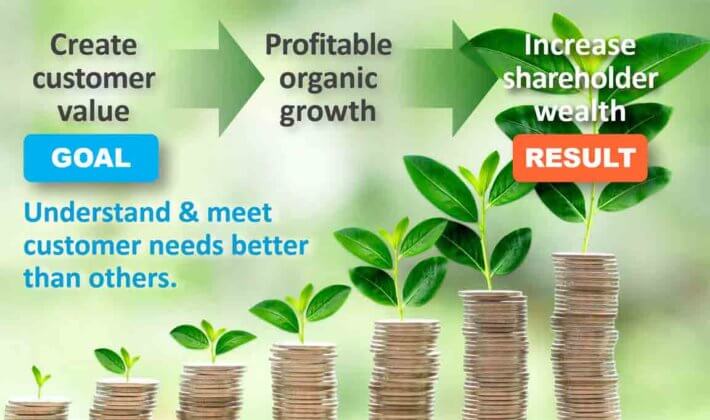
Many growth plans are just pipedreams. The “Red Queen Effect” has your business running as fast as it can just to stay even with competitors. You must compete differently for superior organic growth of a business (www.b2bgrowth.video/2). Moreover, there are three types of growth—inherited, market, and earned—and you should only take credit for the last (www.b2bgrowth.video/4).
You need leaders who are Builders. It’s Builders—not Remodelers, Decorators, or Realtors—that relentlessly pursue the #1 imperative for leaders: Leave your business stronger than you found it. Miss this and you’ve failed the employees who depend on you (www.b2bgrowth.video/3).

Your time-horizon may be stifling growth. Financial results are like the output of an extruder. For better output, change what you feed into the hopper. Focus on the new-product innovation that eventually determines those financials. This moves you from a spectator sport to a participant sport (www.b2bgrowth.video/10).
The #1 imperative for leaders is leave your business stronger than you found it.
Your business initiatives may be “distractions.” Most otherwise-fine initiatives—productivity, quality, sales training, customer intimacy, global expansion, acquisitions—cannot deliver rapid, profitable, sustainable organic growth of a business. The “main show” must always be market-facing innovation (www.b2bgrowth.video/8).
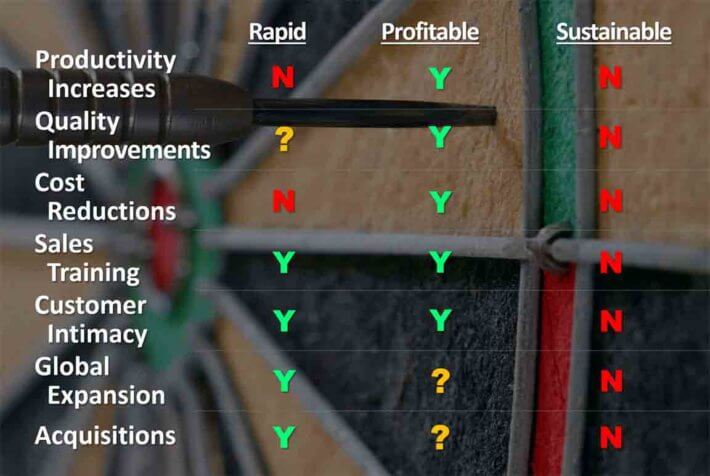
Avoid the pitfalls of 2nd order effects. First-order actions like spending freezes and travel bans lead to second-order growth declines. Your leadership team needs to be wary of “first-domino fixation” and “first-domino amnesia,” or it will never achieve the superior organic growth of a business (www.b2bgrowth.video/11).
You may be on a commodity death spiral. When you stop innovating for customers, your path is marked by lower pricing, lower profits, budget pressures, cost reductions, reduced innovation capability, and then death or “life support”… the very opposite of strong organic growth of a business (www.b2bgrowth.video/9).
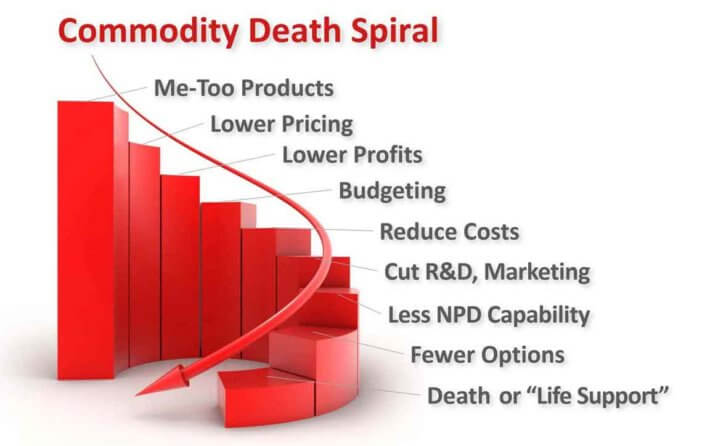
Step 2. You need new capabilities
Of course, just thinking differently won’t get the job done. In addition to a new mindset, you need to build new capabilities for the strong organic growth of a business. Let’s explore what those capabilities are and what they’ll help you do.
It’s all about market-facing innovation. Massive research by Raynor & Ahmed showed top performers focus on market-facing innovation (“better before cheaper”) to drive the strong organic growth of a business (“revenue before cost”). Your new capabilities need to support this (www.b2bgrowth.video/6).
Results are over-rated vs. capabilities. Leaders need to balance their pursuit of “results” and “capabilities.” Today, most are way out of balance. Many leaders pursue near-term results, and then hit the “reset” button to do it all again next year. To improve the organic growth of a business, spend more time focusing on long-term capabilities. (www.b2bgrowth.video/13).
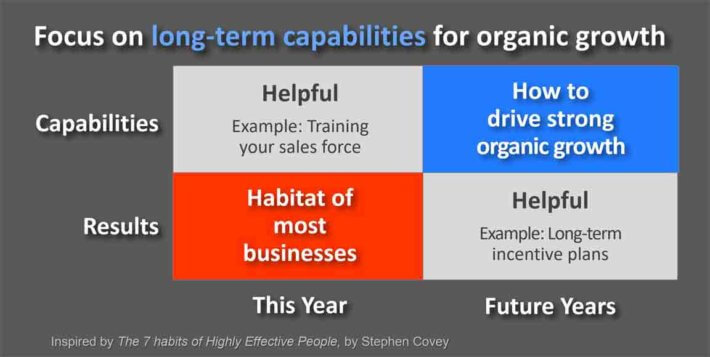
B2B professionals want improved customer insight. Of 24 growth drivers researched by The AIM Institute, the most sought-after capabilities were for understanding customer needs. The three strongest differentiators of success were front-end innovation, market concentration, and customer interviews (www.b2bgrowth.video/12).
Stop leading with your solutions. Most companies squander R&D resources because their solutions don’t address real customer needs (www.b2bgrowth.video/19). In the front-end of innovation, focus on the customers’ job-to-be-done (www.b2bgrowth.video/20), and immerse your teams in customers’ outcomes (www.b2bgrowth.video/22).
You can understand B2B customer needs. Henry Ford’s famous quote discourages some companies from asking customers what they want: “They’d say a faster horse.” But this oversimplification misses two key factors (www.b2bgrowth.video/18). B2B companies in particular have enormous engagement potential for driving the organic growth of a business (www.b2bgrowth.video/15).
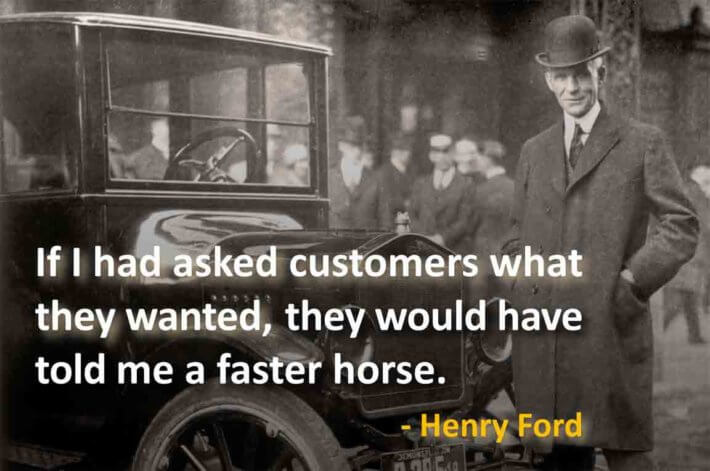
Eliminate most commercial risk early. With B2B-optimized voice-of-customer interviews (www.b2bgrowth.video/24), you can eliminate most commercial risk, leaving only technical risk to resolve in the development stage (www.b2bgrowth.video/23). This is a huge R&D efficiency boost for driving the organic growth of a business.
You can eliminate most commercial risk early, leaving only technical risk to resolve in the development stage.
Develop capabilities for two types of interviews. While strong qualitative interviews are needed for capturing unarticulated needs, your new-product teams also need to master quantitative interviews (www.b2bgrowth.video/27). The latter is critical for defeating confirmation bias, internal filtering, and wishful thinking.
Build your teams’ interviewing skills. Great B2B interviewing requires new skills, e.g. the “What & Why” method, economic probing questions (www.b2bgrowth.video/26), and interview trigger methods (www.b2bgrowth.video/30). Use these to gain impressive customer insights and engagement to drive the organic growth of a business.
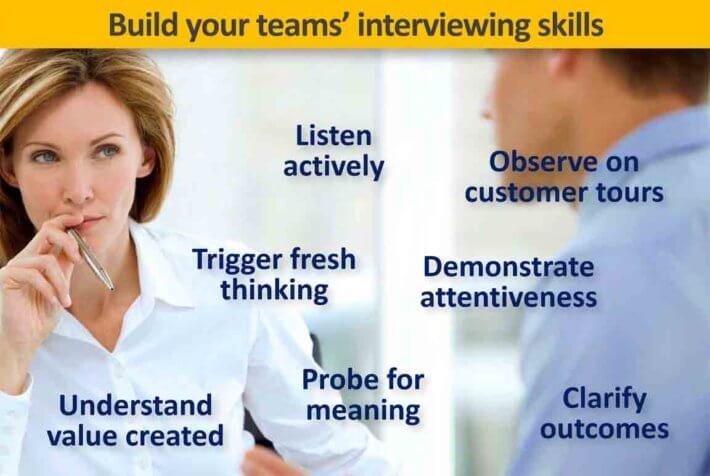
Know when to use “hired guns” vs. do-it-yourself VOC. Should you hire a firm to conduct your voice-of-customer interviews, or train your own people to do this? Consider these four factors to find the answer for your business (www.b2bgrowth.video/32). Hint: Customer insight abilities are key competencies most B2B companies should own to drive the organic growth of a business.
Learn to conduct great virtual VOC. In-person interviews are still the gold standard, but virtual voice-of-customer has 10 often-surprising advantages. Increase your use of web-conference interviews to boost innovation efficiency and significantly accelerate your new product development (www.b2bgrowth.video/31).
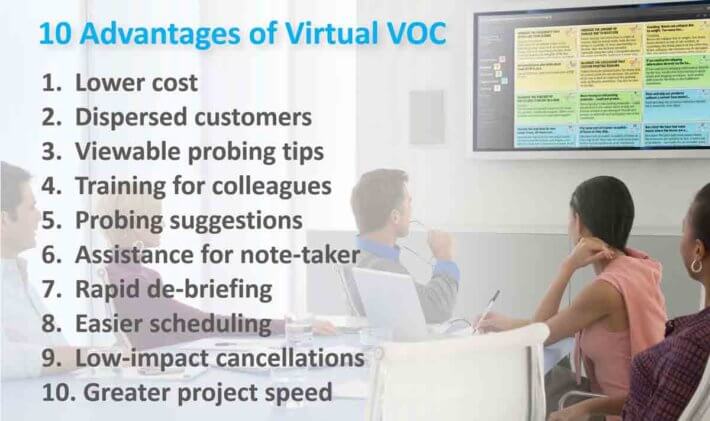
Manage transformational projects differently. In a post-mortem, the landmine that blew up your project is obvious. Here’s how to defuse potential landmines in “pre-mortems,” when you can do something about them (www.b2bgrowth.video/44). You can also greatly improve your project reviews with management (www.b2bgrowth.video/45).
Step 3. You need new metrics
It might seem odd to elevate “metrics” as a key driver for attaining the profitable organic growth of a business. But the reason is simple: Business leaders are so oppressed by short-term, financial metrics today that new counter-balancing metrics are essential. Without this, expect efforts to drive the organic growth of a business to stall.
Business leaders are so oppressed by short-term, financial metrics today that new counter-balancing metrics are essential.
Your Vitality Index isn’t enough. The Vitality Index (% of sales from new products) is a helpful but lagging indicator of the organic growth of a business. Here are two new leading metrics—both simple and zero-cost—you can employ: Growth Driver Index (GDI) and Commercial Confidence Index (CCI) (www.b2bgrowth.video/49).
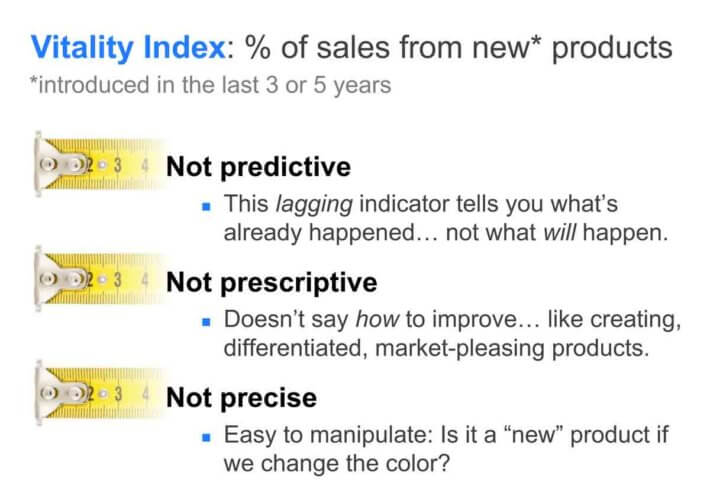
Integrate the front-end of innovation into your stage-gate system. A stage-and-gate process does much well, but it only manages the interface between a company and its teams. Add “customer insight skills” to build a strong interface between teams and customers (www.b2bgrowth.video/40). This is critical to driving the organic growth of a business.
Require data-based evidence prior to the development stage. There are four all-too-common practices that lead to innovation malpractice and squandered new-product R&D resources. Escape these traps with quantitative customer interviews and Market Satisfaction Gaps in the front end of innovation (www.b2bgrowth.video/35).

Measure your progress in understanding customer needs. Overcome confirmation bias and a host of evils by insisting on data-driven product design at the beginning of the development stage. The Commercial Confidence Index (CCI) metric measures your progress in doing this (www.b2bgrowth.video/49).
Measure your progress in building the right growth capabilities. Consider running a free diagnostic every year to measure your improvement in 24 growth drivers. Then reward business leaders on their improvement of these capabilities (www.b2bgrowth.video/13). The Growth Driver Index (GDI) metric measures your progress here (www.b2bgrowth.video/49).
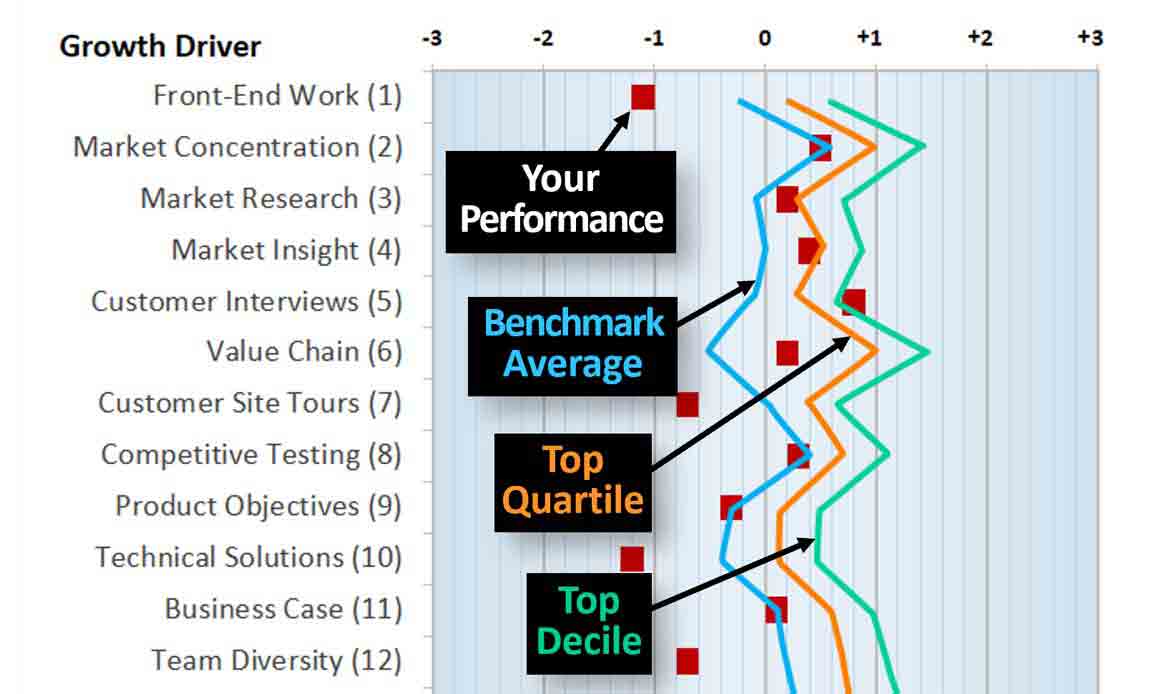
Benchmark your growth capabilities (for free) at www.b2bgrowthdiagnostic.com.
Next steps…
Can you afford two minutes per day or two minutes per week to learn how to drive the organic growth of a business? If so, sign up for one of our free plans:
- 10-Week plan: a new 2-minute video every business day
- 50-Week plan: a new 2-minute video every week
If you find these helpful, consider who else might benefit from them:
- Board directors eager to demonstrate superior growth to investors
- Business leaders tired of erratic or sluggish organic growth
- Technical or business professionals desiring career-boosting capabilities
- Professors seeking supplemental lessons for oft-overlooked B2B (vs. B2C)
- Trade associations looking to boost members’ business skills (not just technical)
Our goal is to change the way B2B business leaders—current and future—grow their businesses. Is that so their companies and shareholders can make more money? Sure, but here’s our primary motivation: With the type of profitable, sustainable growth we’re promoting, employees will have more rewarding and stable careers.
With the type of profitable, sustainable growth we’re promoting, employees will have more rewarding and stable careers.
Pollyannish? Tilting at windmills? Perhaps, but we’re confident business leaders will abandon today’s broken approach to growth at some point in the future. Let us know if you’d like to be part of this change and discuss how we can help.
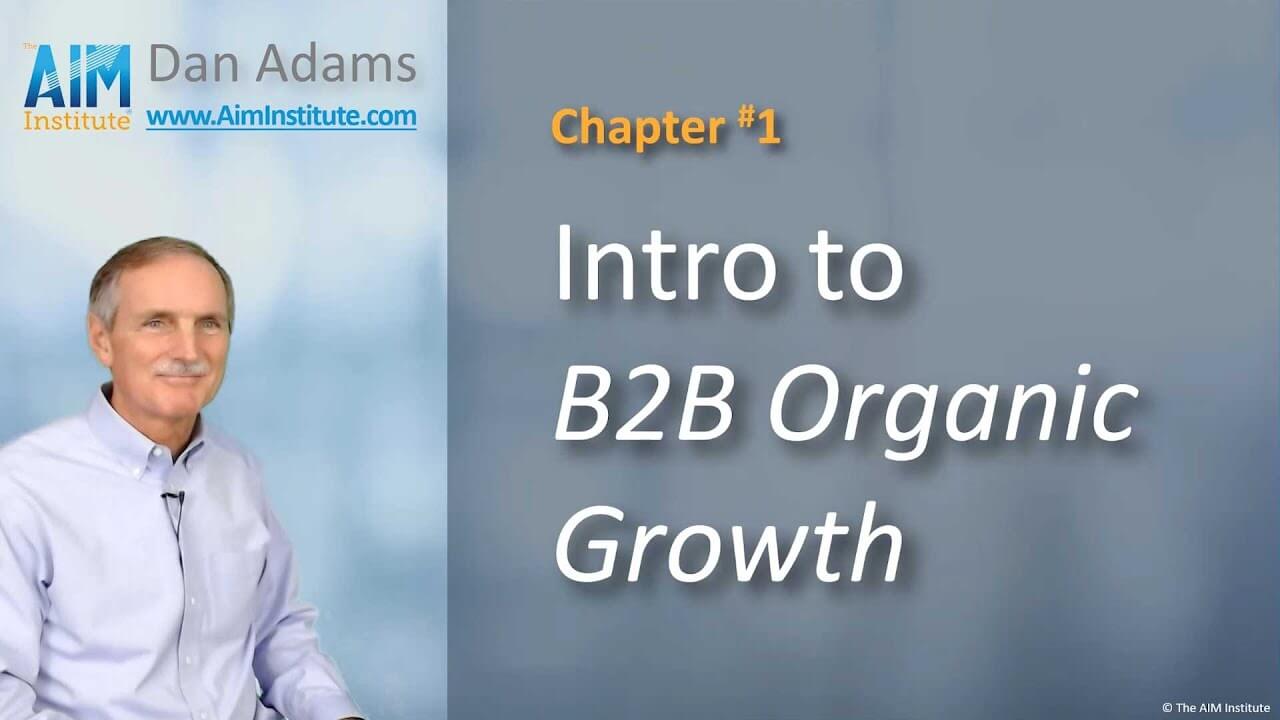
Comments